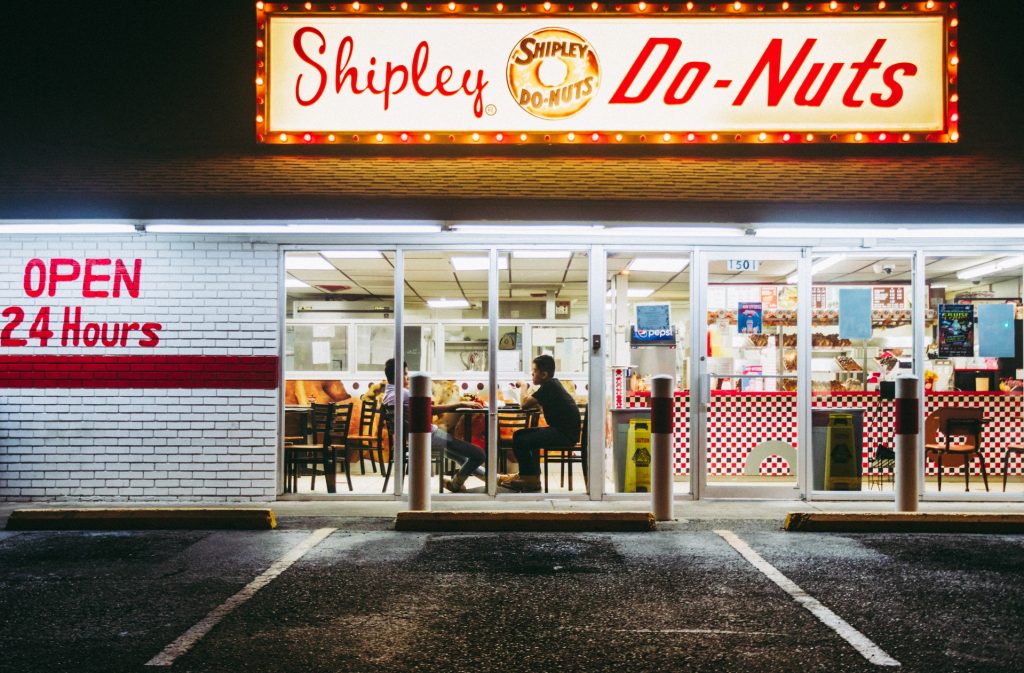Having your first business up and running is an exciting time for any entrepreneur. You see the profits rolling in and you’re already thinking of the next step. Which is, more often than not, opening your second location.
Whether you’re considering an expansion into your local market or even in another country, successfully opening a second business location is no easy feat and working out areas like organizing your cash budgets & getting a hold of your labor costs needs to be planned for accordingly.
These areas represent where your attention should be directed to ensure a profitable second business location.
Scheduling
The effects of proper scheduling can’t be understated, just as the effects of improper scheduling can’t be understated.
Having the right number of employees on staff will ensure a positive customer experience as well as a steady stream of new faces rolling in to try out your store.
On the other hand, having too few employees on hand will lead to unhappy customers as well as a higher than average turnover rate. And having too many employees on hand will lead to money being wasted on labor costs, which is going to hurt any business that’s just starting out.
Aside from that, how much time are you spending on creating schedules?
If you’re still using pen & paper or Excel spreadsheets for your scheduling, the answer is too much and you should change your scheduling operations to ensure your full focus is on the betterment and growth of your business rather than wasting time on dated scheduling practices.
And if you’re opening your business in an area affected by Fair Workweek or Predictive Scheduling laws, you must also worry about your schedules staying in compliance.
Thankfully, there’s a software solution for everything these days, including improving your scheduling practices.
Deputy’s auto-scheduling feature takes the guesswork out of your scheduling by accurately forecasting your labor demand using the data from multiple demand signals like sales, foot traffic, bookings, etc.
It also allows you to input your own requirements in terms of compliance, so if you’re in an area that states that each employee must take at least one break, Deputy’s auto-scheduling feature allows you to input those requirements so the auto-created schedules are 100% compliance ready!
And the time Deputy saves you can’t be understated, go from spending hours each day on schedules to just a single-click. Leaving you to focus on how your brand will dominate your industry. To see this workforce management platform in action for yourself, click on the link below to set up a time to speak with one of our representatives.
Transferring critical business systems
As you’ve already spent time refining the systems that work for your first location, they should be easy to transfer and scale to your second location. The solution providers for aspects of your business, like HR and accounting, should be able to deal with multiple locations without causing any issues for your business.
For example, if you hire hourly employees, you need a scheduling system that will scale as you grow.
Deputy is suitable for providing scheduling and staff management solutions for multiple locations. It’s also chosen by franchises based in anywhere from two to hundreds of locations, like McDonald’s, to ensure that staff are scheduled correctly in every single one.
Read our customer success story of San Churro Chocolaterías to find out how Deputy helps the owner manage 52 locations with ease.
The franchise owner stated:
“Each franchise is managed as a small business, and that’s the power of how simple and intuitive Deputy is. You do not have to be a data scientist or an actuary to work it out. Deputy saves time in developing rosters and communication, and also gives you clarity around the cost of your schedules, which is tied to proper award rates.”
- Existing business conditions
You need to figure out what’s working in a financial sense in your current location. Ideally, you will have experienced stable financial growth for a specified time. You can choose which period you believe is suitable enough to go forward to your second location. Ideally, you should enjoy at least a year or two of steady growth before contemplating a second business location. If you’re finding that you can’t cope with the demands of customers, it may be time to think about expanding to a second business location.
- What are your financing needs?
Before opening a second business location, you need to consult with financial advisors and accountants for a thorough check of your finances in terms of the investments you’ll need. It’ll be easier to secure funding if you’re able to demonstrate a positive track record of running your first business.
- Work out your cash flow
You can use the information and data you’ve collected from your first business to figure out how long it would take for your second business to generate revenue and make a profit. You must identify all the different cash reserves you have to ensure the second location is funded until it can generate its own profits. You need a buffer in place to be able to support both of your businesses if the second location fails to make a profit within the budgeted time.
- Management considerations
If you have been a hands-on manager at your first location, you need to think about the impact that switching your attention to the second location will have on your first business. Ideally, you should have trained managers to keep your business running accordingly by following standards and rules that you’ve set in place. You must put contingency plans and monitoring mechanisms in place to be updated on what’s happening at your first business location while you’re setting up your second business location.
- Find the right location
When trying to find and negotiate a lease for your second business location, you need to make sure there’s enough distance from your first location to your second location. It may sound like a good idea to have your two businesses close together, especially if there’s great demand for your services or products from your first business.
However, this could end up hurting your business overall because your first and second business could overlap and therefore create confusion for your customers. You should conduct research into different neighborhoods to determine the best place for your second business location. You also need to work out how much it will cost to market and advertise to a different audience.
- Work out how to keep your special touches
Unfortunately, some businesses are known to lose their ‘special touch’ when they expand. Your first location could be very cozy and intimate, which is what your customers love. However, this could be difficult to replicate with a second location. Conduct due diligence to figure out all of the reasons your first business has been successful. This goes beyond tangible factors, like products and services, to include elements like the atmosphere and how well your customers interact with staff.
If your customers get on very well with your staff, you need to ensure your new workforce is trained to provide the same (or a higher level of) customer service. One way to do this is to ask different staff members at your existing business to mentor staff at your second business location.
Another recommendation is to provide performance reviews for your staff at your second location to determine whether they’re learning your way of doing things. You can compare the performance of your staff at your second business location to the staff at your first business location. Reviewing performances does not have to be a lengthy process and it does not have to involve taking up too many resources.
With Deputy, you can provide performance management on-the-go. Our software helps you rate, view, and comment on how your staff are performing while they’re carrying out their duties. You can then turn these insights into customized performance reports with comments and ratings on how staff are getting on in your second location. These reports can be used to nurture your staff so they adopt the same level of quality customer service that’s provided in your first business location.
- Duplicate or improve your business culture
Similar to the points above, it’s important to find out what makes your company special and replicate it with your second business location. You need to ensure all employees in different locations get continued updates about your mission as well as your values.
To communicate your company culture, use software and communication tools that enable you to speak to all of your workforce in an easy and convenient way. With Deputy, you can use the collaboration hub to communicate your values to your staff at regular intervals. This will help you continue with spreading your mission statement as well as what you expect from your staff.
- Think about trademarking your brand
If you’re considering expanding your business, contemplate consulting an intellectual property attorney to ensure you’ve secured the intellectual property rights of your business.
Think about trademarks, patents and copyrights to ensure that, when you expand and your brand becomes better known, a competitor cannot use your brand equity for a new business. Without protecting and trademarking your brand, someone else could easily profit from all the hard work you’ve done to build your brand.
- Keep an eye on the costs on both locations
You need to continue to focus on the profitability of your first and your second business location. One of the biggest expenses of business is staff cost. If you hire an hourly workforce, you must ensure your scheduling software is one that prevents time theft.
To ensure you only pay your staff members for when they work, use Deputy’s on-site time clock. This enables you to capture your employees as they start their shift by using our time clock app kiosk, which is downloadable from Google Play and the App Store. The on-site time clock helps you manage breaks so your employees can remain compliant with break regulations.
To give staff at your second location a helping hand in carrying out their tasks, use Deputy’s task management function to provide a checklist of things that need to be done at certain times of the day. This task list can be broken down into one-off events, like physical inventory management, or it can be a daily checklist. For example, if you run a restaurant, the different areas that need to be cleaned to the required standard.
Opening a second business location is a big decision to make. This guide should have provided you with information to consider before taking the plunge and expanding your business. Ideally, your first location will have excellent management, high profitability and a strong brand before you think about expansion.
You should consider the information above and carry out your due diligence to benefit from the advantages of opening a second location and reduce the risk. Whether your business has one, 20 or 2,000 locations, you should use the best shift scheduling software to ensure your staff work shifts only when they need to. Your software must also be capable of integrating with payroll to ensure all your staff are paid accurately and on time.
Sign-up for a free trial of the best workforce management software to find out how we can help your business schedule staff more efficiently, no matter the number of locations you have. We are already trusted by businesses that have multiple locations, single mom-and-pop shops, as well as multi-million and billion-dollar franchises like Amazon and Nike.







